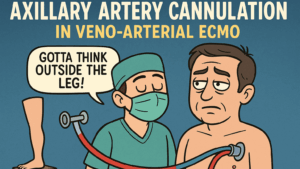Introduction: Extracorporeal membrane oxygenation (ECMO) is associated with a high rate of neurologic complications. Multimodal neurologic monitoring (MNM) has the potential for early detection and intervention. We examined the safety and feasibility of noninvasive MNM during ECMO. We hypothesized that survivors and non-survivors would have meaningful differences in transcranial Doppler (TCD) sonography and electroencephalographic (EEG) characteristics, which we aimed to identify. We also investigated adverse neurologic events and attempted to identify differences in EEG and TCD characteristics among patients based on the type of ECMO and the occurrence of these events.
Material and methods: We performed an observational study on all patients undergoing ECMO at Baylor St. Luke’s Medical Center’s critical care unit in Houston, Texas, United States, from January 2017 to February 2019. All patients underwent a noninvasive MNM protocol.
Results: NM was completed in 75% of patients; all patients received at least one component of the monitoring protocol. No adverse events were noted, showing the feasibility and safety of the protocol. The 60.4% of patients who did not survive tended to be older, had lower ejection fractions, and had lower median right middle cerebral artery (MCA) pulsatility and resistivity indexes. Patients undergoing venoarterial (VA)-ECMO had lower median left and right MCA velocities and lower right Lindegaard ratios than patients who underwent venovenous-ECMO. In VA-ECMO patients, EEG less often showed sleep architecture, while other findings were similar between groups. Adverse neurologic events occurred in 24.7% of patients, all undergoing VA-ECMO. Acute ischemic stroke occurred in 22% of patients, intraparenchymal hemorrhage in 4.9%, hypoxic-ischemic encephalopathy in 3.7%, subarachnoid hemorrhage in 2.5%, and subdural hematoma in 1.2%.
Conclusion: Our results suggest that MNM is safe and feasible for patients undergoing ECMO. Certain EEG and TCD findings could aid in the early detection of neurologic deterioration. MNM may not just be used in monitoring patients undergoing ECMO but also in prognostication and aiding clinical decision-making.
Keywords: electroencephalography; extracorporeal membrane oxygenation; intracranial hemorrhage; neurophysiological monitoring; stroke; transcranial doppler sonography.







